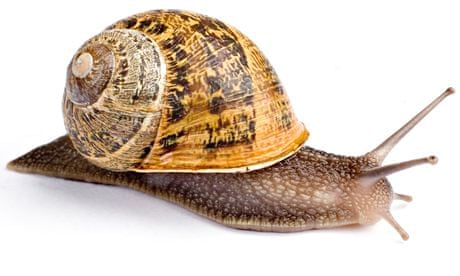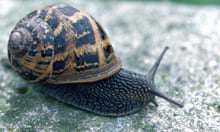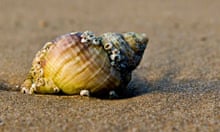Every gardener knows the temptation – you find snails ravaging your petunias or your lettuce patch, and rather than resorting to chemicals or messy beer traps, you sling the snails into your neighbour's garden and hope they won't come back.
New research shows that this is exactly the right approach – but only if you can throw far enough.
Snails appear to have a homing instinct over short distances, as proved by a famous experiment in 2010 that involved moving snails from the garden they were found in. But research published on Friday shows this homing instinct can be overcome for many snail populations. If the pests are removed by at least 20 metres from their home patch, they will largely be unlikely to return.
The finding opens up the delightful prospect of "snail wars" among gardeners, vying to lob the gastropods the furthest distance possible in order to keep them off. Beware, however, that even if you manage to remove a large proportion of the blighters, they are likely to repopulate your herbaceous borders alarmingly quickly.
According to the researchers from Queen Mary, University of London and the University of Exeter, there are two types of snails: some that are "members of a larger population that show little affinity to the garden itself, and core members of a local garden population that regularly return to their home if removed".
Through a series of tests from 2001, using empirical methods such as marking snails with correction fluid and checking the plants to see whether they returned if lobbed away, and through statistical analysis of test data, the scientists have concluded that removing snails by distances of more than 20 metres, which appears to be usually sufficient to nullify their homing instinct, is as effective a control method as using "natural" deterrents such as eggshells and beer traps. No such method will be completely effective in protecting a gardener's prized cultivations, as snail populations form part of a complex biodiversity matrix in which pests and their predators proliferate to the extent their local ecosystem allows.
David Dunstan, professor at Queen Mary University of London and co-author of the research study published in the journal Physica Scripta, said: "We showed that the number of snails regularly or irregularly visiting a garden is many times greater than the number actually present at any one time in the garden. As such, gardeners shouldn't be setting out to eliminate snails from their gardens. To achieve such a feat would require the gardener to rid the whole neighbourhood of snails, which would be a slow process. Gardeners should be setting out to minimise the damage done by snails, which our results showed could be quickly achieved by simply removing the snails over 20 metres away."
Few snails were hurt in the course of this research, the scientists are anxious to note: "There was little evidence of subjects [ie, snails] withdrawing from the trial. While occasionally a sound was heard when the snails landed, most snails had soft landings in the undergrowth and long grass of the wasteland [into which they were thrown]."








Comments (…)
Sign in or create your Guardian account to join the discussion